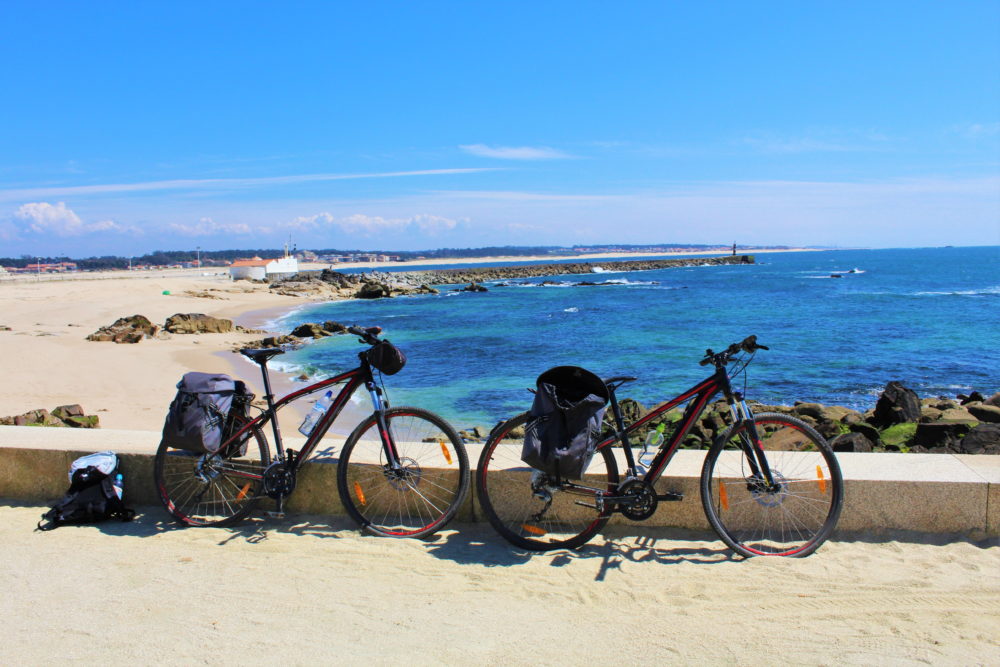
Photo courtesy of Exodus Travels
One of the first things we stop to see on our Exodus Portugal bike trip along the Atlantic coast from Porto to Lisbon is a little white chapel. Capela da Senhor da Pedra perches by the water’s edge in Miramar. It is on this same rock that pagans once prayed for nature, says our guide Alexandre Conceição. “Nature is their god.”
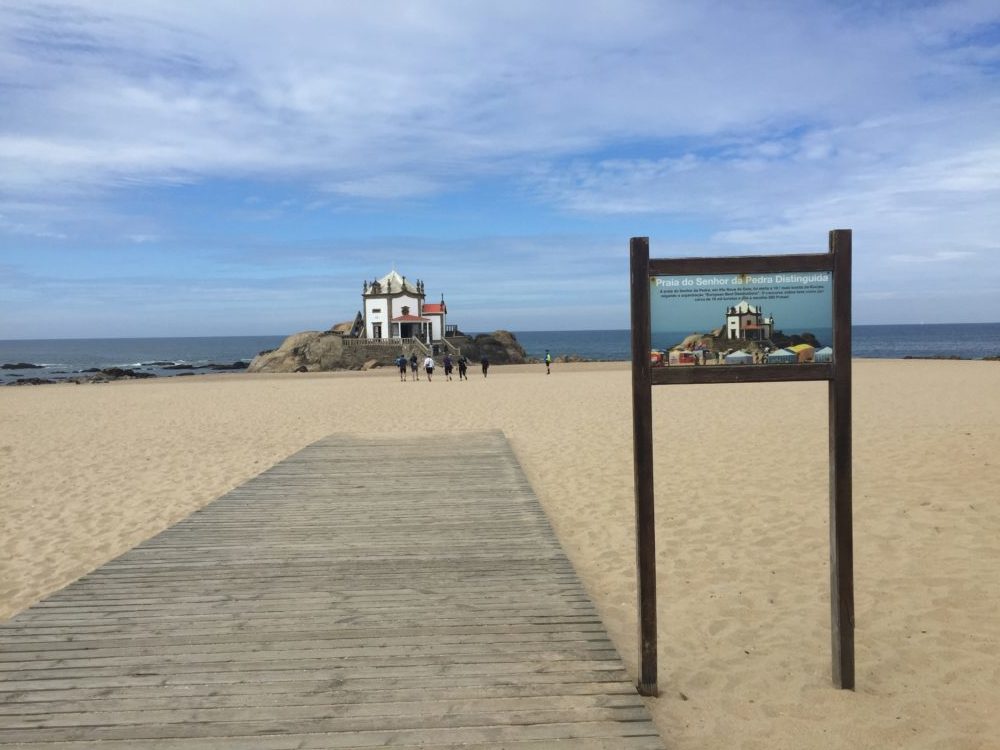
Pagan church Capela da Senhor da Pedra. Photo by Diana Ballon.
Portugal’s transcendent natural landscapes
I get how nature can feel like a religious experience. Cycling over five days and about 300 kilometres—along boardwalks, next to sand dunes, through pine forest and alongside ocean cliffs—certainly did feel like a transcendent experience.
Domestic and work stresses fell away. Instead of staring at a computer and phone most of the day, my screen was a moving landscape of blue water and an even bluer sky. Beige sand and green trees. I was feeding off endorphins.
Portugal’s Silver Coast, or Costa de Prata, is not an area frequented by tourists, a surprise given its sheer beauty and accessibility. Beaches go on seemingly forever, and its historic towns and fishing villages are as charming as the local people are friendly.
Day 1: Making new friends in Porto
I arrive into Porto at noon after a 10-hour overnight flight from Toronto with a couple of hours to roam through town before meeting the other participants and our guide.
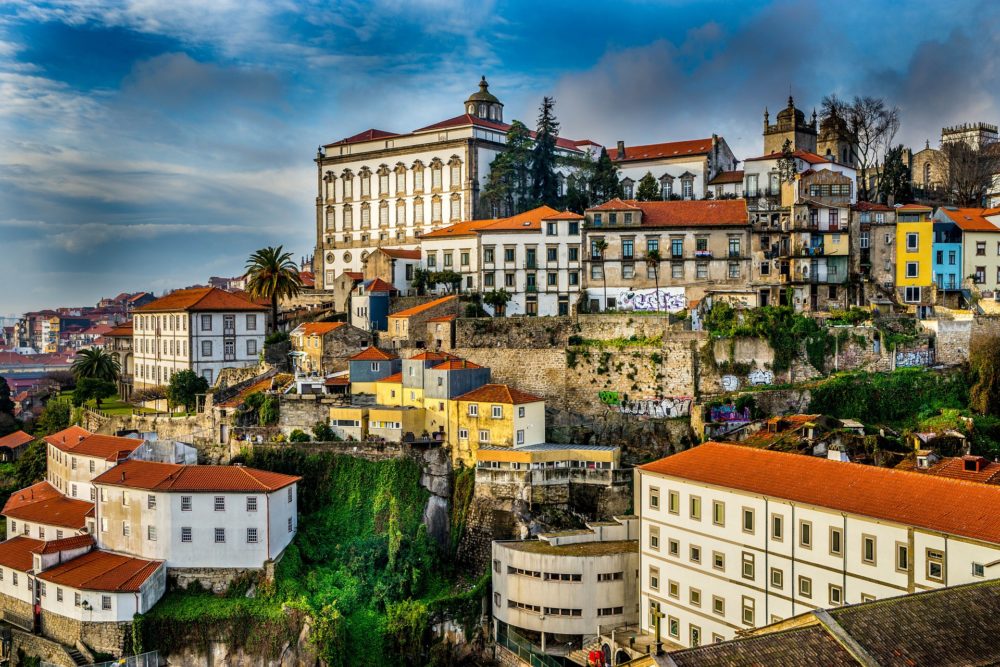
Photo courtesy Exodus Travels
I had always wanted to join a group bike trip, but now, arriving alone, I was feeling like a kid on the first day at a new school. Would I make friends?
My worries were quickly dispelled. People began strolling into the hotel lobby, introducing themselves and shaking hands. I was one of 15 fit men and women between the ages of 43 and 70—some single and some couples—from Canada and beyond. There were several others also from Canada (B.C., Alberta and Nova Scotia). A couple from California, several from Great Britain and one from Italy.
Our local guide Alex gives us a brief orientation of the trip to come and the next day’s itinerary, and we then head to a port wine cellar for some tastings, followed by dinner back at our hotel.
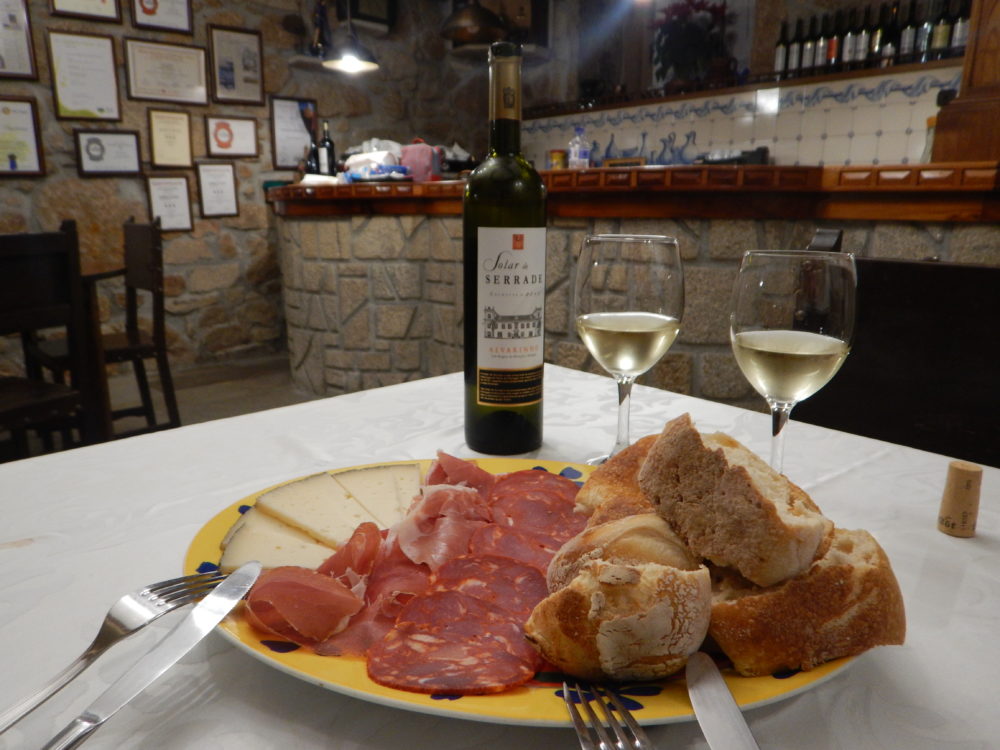
Portuguese food and wine. Photo courtesy Exodus Travels.
Day 2: Douro River and coastal boardwalks to the sand dunes of Espinho
From the banks of the Douro River we begin a gentle ride along the river to its estuary. Then we follow the coast, mostly on bike paths, but also on a boardwalk, over marshland and past sandy beaches.
We stop for a delicious buffet lunch of prawn and fish croquettes and cheese and meats at the Marbelo Praia-Bar, which overlooks the sand dunes in Espinho.
In the afternoon, we stop for a stroll at Parque Ambiental do Buçaquinho, a beautiful protected forest area and environmental centre rich in plant life. We then continue our cycle through a forest of pines.
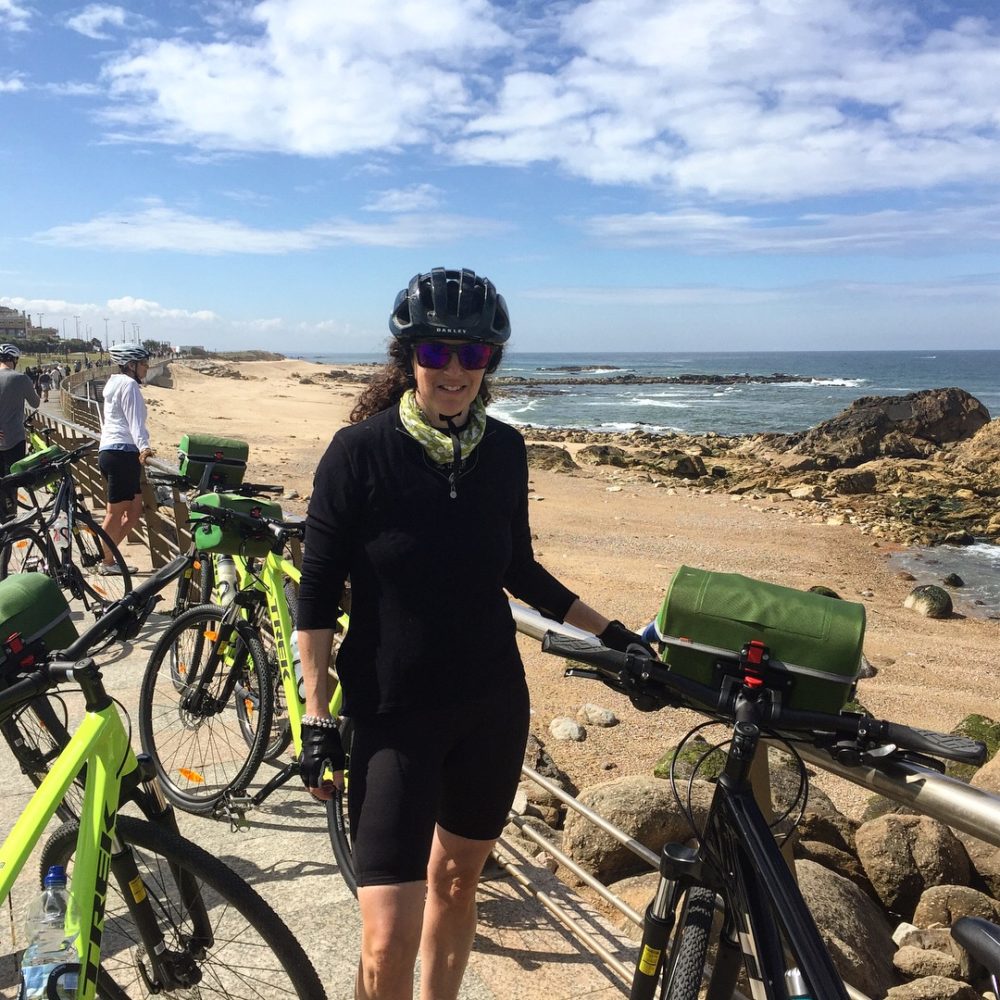
We were supposed to stay in the seaside town of Furadouro. But due to a hotel mix-up (not our guide’s fault), we end by going back almost 25 kilometres to Espinho, some of us by bike, others by van. But for that, we got to stay in the 5-star Hotel Solverde Spa & Wellness Center with a killer outdoor pool.
That night, several of us take a cab into town for dinner at A Cabana, a classic Portuguese restaurant where my pork loin was enough for a family of four. I drift off easily to sleep that night.
Day 3: Aveiro Lagoon and colourful fishing towns to Mira Beach
For the first 10 kilometres we cycle along the side of the road, following the Aveiro Lagoon and the Reserva Natural das Dunas de São Jacinto, a beautiful coastal marshland rich in sea birds.
For lunch, Alex and the van driver Andrei set up a delicious picnic of salads, cheeses, bread and a chorizo that they sear over flames in a clay dish called an assador. We eat at picnic tables next to a group of school kids wearing blue sunhats.
We then take a short ferry across the mouth of the Aveiro Laguna. In the afternoon, we cycle past moliceiros, traditional fishing boats painted in bright colours with high pointy prows. We soon make another stop, this time at the town of Costa Nova, its houses—once fishing shacks and now mainly vacation homes—painted in colourful vertical stripes.
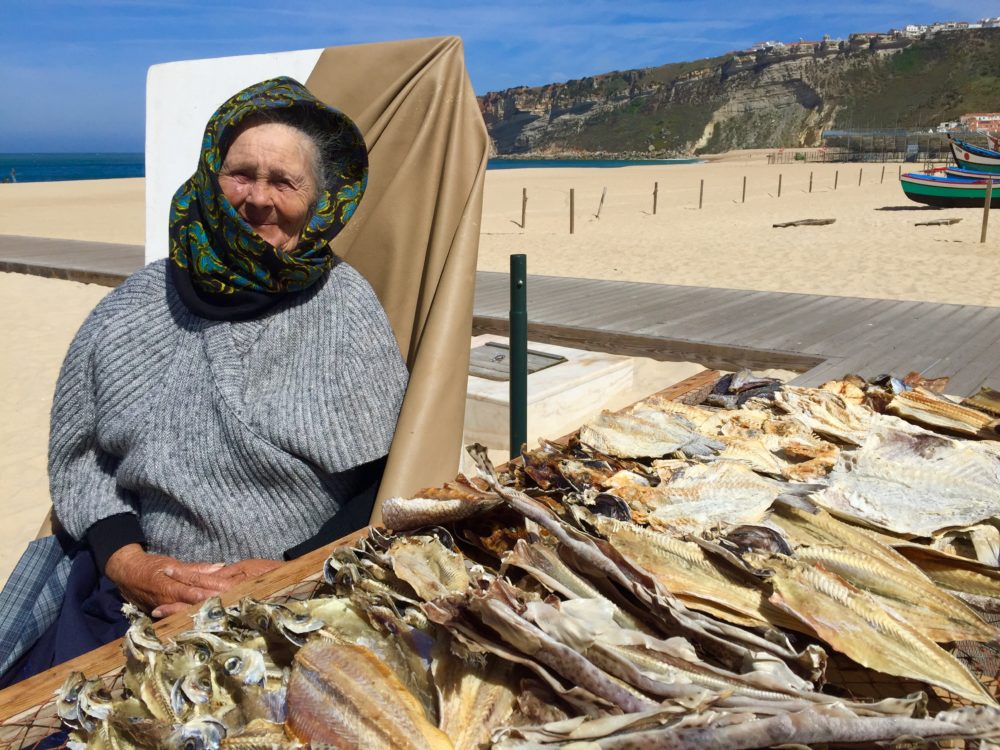
Woman selling fish. Photo by Diana Ballon.
Getting back on our bikes, we pass people bent over digging up clams and crab in the sand, and later fishermen fishing with long poles and nets. The last 10 kilometres we cycle along mostly gravel road to Maçarico Beach Hotel on Mira Beach, purportedly one of the finest beaches in the country.
Day 4: The journey to Figueira da Foz
In our briefing this morning, Alex talks about psychopaths, dirty roads and bitches. Should we be offended? Hardly. His broken, but well-schooled English is actually referencing cycle paths, gravel roads and beaches!
Today we ride along mostly flat and quiet roads through one of the area’s biggest dune systems, close to several lagoons and through pine forest. I say “mostly” flat because there are several tiring kilometres after lunch where we cycle uphill (about a nine percent gradient). But we are rewarded by a downhill ride along windy roads that ends with a stunning view of Figueira da Foz.
Day 5: Blackened pine forests to the rugged cliffs of São Pedro de Moel
We ride mainly through a pine forest where the trees, planted in the 15th century, were once used to build naval ships. Many of the trees stand black and skinny, having been ravaged by the wildfires that broke out in 2017.
We follow the Atlantic Road or EuroVelo 1, which is one of 15 long distance cycling routes crossing Europe. Clearly, we are part of something bigger! Although there are some flat sections, we have one very big hill, and I am happy when we arrive late afternoon at São Pedro de Moel. I love the dramatic coastline, the rugged cliffs and crashing waves here that are a sharp contrast to the long stretches of sand earlier on our trip.
Day 6: Picturesque Nazaré to the medieval castle of Óbidos
Our first stop today is Nazaré. I am smitten. Nazaré is one of the most famous fishing towns in Portugal. You will still find women wearing the traditional embroidered skirts here (apparently seven layers of them). The town is also renowned for having the largest wave ever surfed.
Around the main square, boutiques are crammed with handicrafts and souvenirs. I pick up a cork purse, a rooster-adorned tablecloth and a wood and tile cheese board.
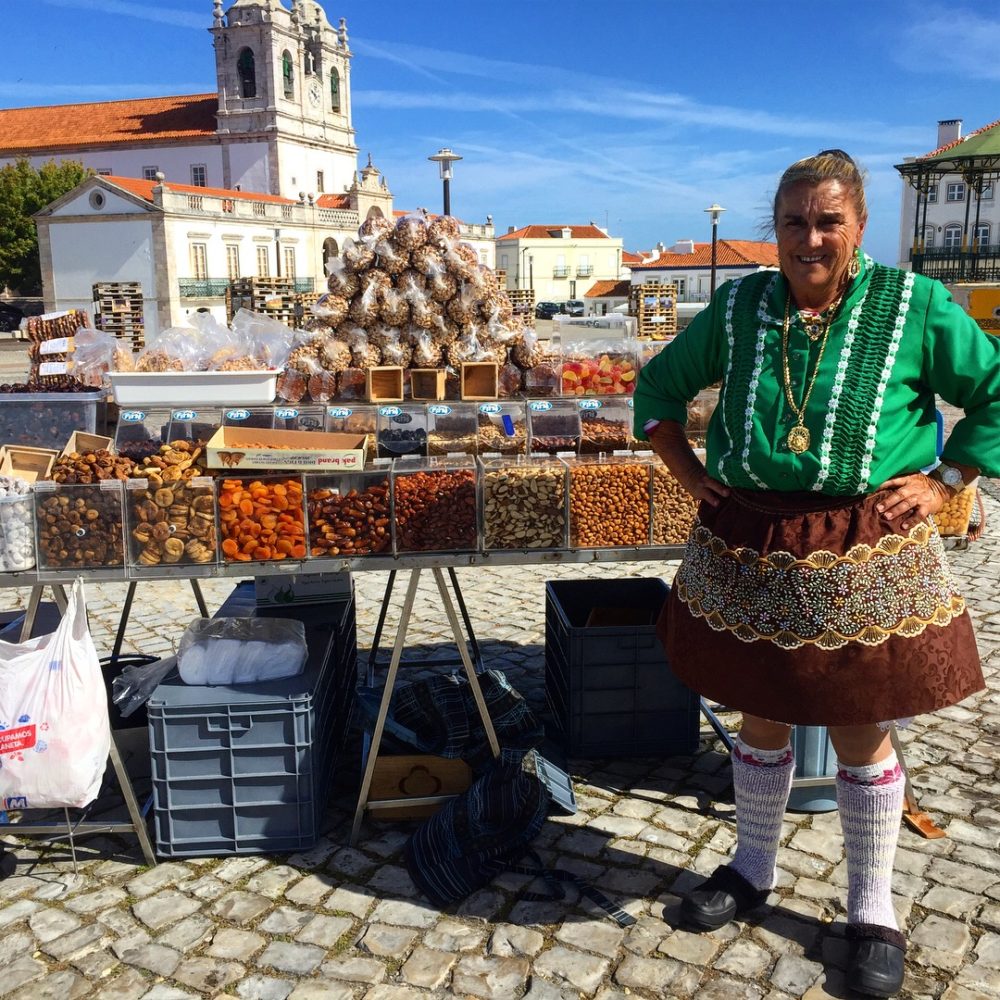
Woman in Nazaré. Photo by Diana Ballon.
São Martinha do Porto
We then get back on our bikes, riding past small farms until we stop for lunch in São Martinha do Porto. Unlike the waves of Nazaré there is a calm, shell-shaped lagoon here, and a beautiful boardwalk through the dunes.
The restaurant Cima d’Agua is glassed in on three sides and the crème caramel with corn bread for dessert is memorable!
Foz do Arelho
Our next stop is the equally beautiful Foz do Arelho. I throw off my shoes and lie down in the warm sand. Although I removed my shoes, I forget to take off my helmet, which made for an awkward sunhat.
After our final short but steep uphill ride I feel euphoric to sail down the next hill on my bike. The sun is warm but there’s a cool wind. I move quickly through a mottled pattern formed by shadows on the path.
We arrive at our destination, the magical Óbidos, with a medieval castle inside its walled town and narrow, cobblestone streets.
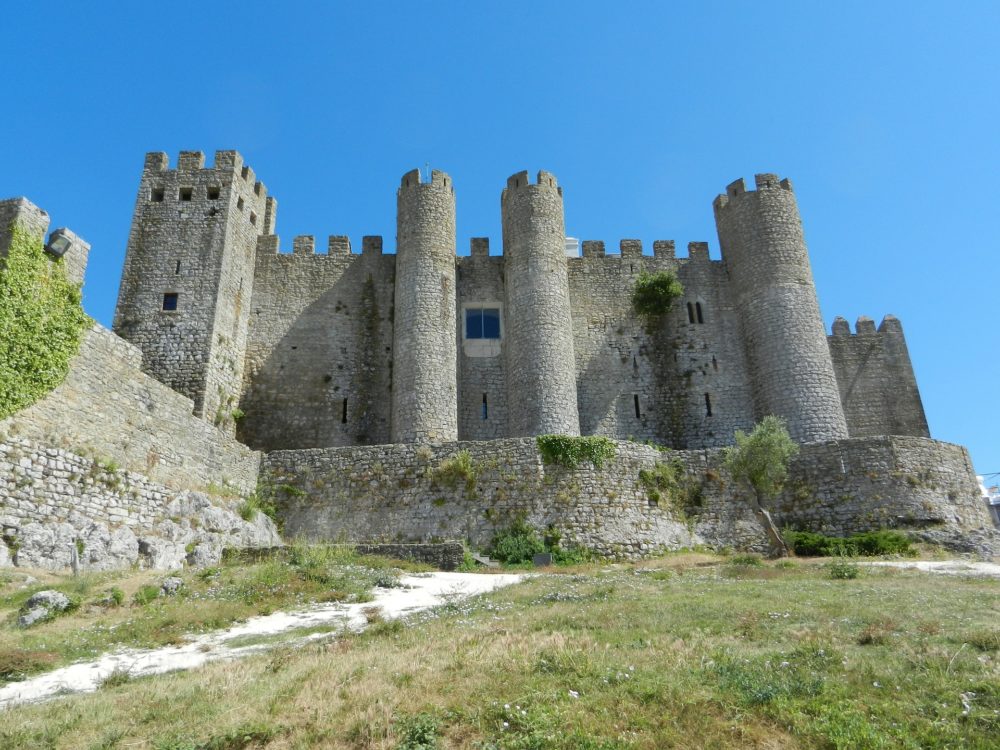
Óbidos. Photo courtesy Exodus Travels
We come to a final stop on our bikes and dismount, and I am hit by a wave of melancholy.
Alex opens a bottle of champagne and we all drink a toast to how far we’ve come. It has been the best biking day so far, and I have felt part of a team. I don’t want it to end.
After saying goodbye to our bikes, we enter our last hotel, The Literary Man. The hotel is a former convent with stone arches and walls lined with books. It’s a nod to Óbidos’ UNESCO designation as a City of Literature. The hotel has a great rustic-chic restaurant and bar and the rooms are simple but perfect.
Day 7: Cobblestone streets of Lisbon
After breakfast we drive about an hour to Lisbon, drop our bags at the hotel and then travel by van to the city centre to explore.
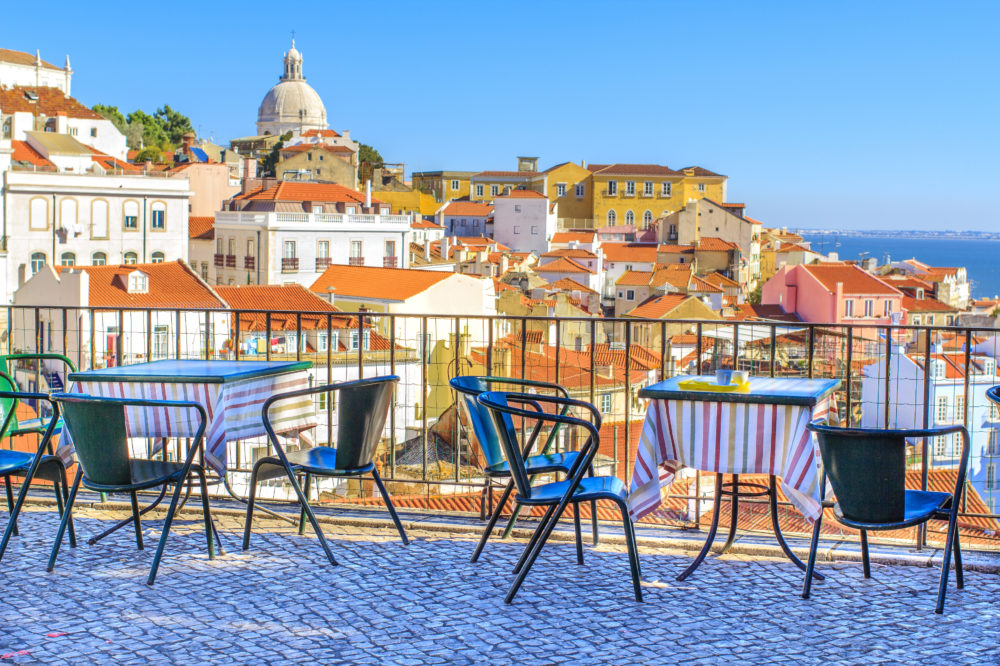
Terrace with view of Alfama in Lisbon. Photo courtesy Exodus Travels.
I spend most of my time wandering the narrow, cobblestone streets of Alfama. It’s the oldest part of Lisbon. Here you can hear the melancholy and haunting Portuguese music of Fado played in cafés and bars.
It is about 10 degrees Celsius hotter here than on the rest of our trip. I miss my bike, my new friends and the quiet fishing villages of the coast. I hope one day to return.
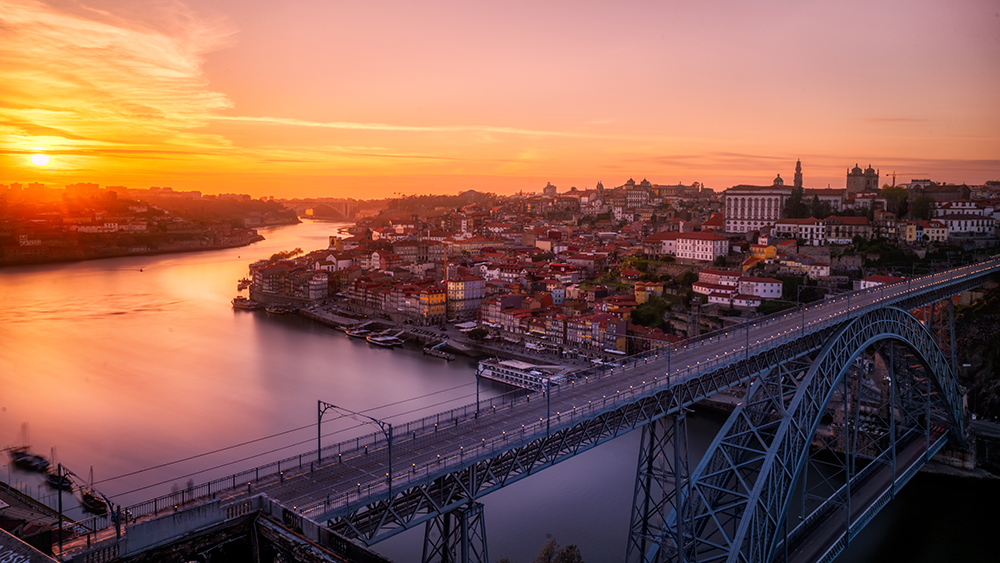
If you go
Exodus Travels offers tours through more than 100 countries. From walking to cycling, to mixed activities, to family trips and seasonal getaways. Besides the family tours, the average age is about 50 and older. The length of tours varies but tends to be eight to 14 days.
This Porto to Lisbon Atlantic Ride is a 7-night tour, of which five days are cycling. Four-star hotels, all breakfasts and one dinner are included. As are excellent Trek bikes with paniers, a guide and a van that accompanies you on the trip and takes your luggage.
Latest posts by Diana Ballon (see all)
- All the Power and Beauty of Panama Can Be Found in the Water - January 9, 2020
- 5 Weekend Getaways in Canada That Pair City Life With Time in Nature - July 26, 2019
- An Adventurous Portugal Itinerary: From Porto to Lisbon on Two Wheels - July 23, 2019
- Luxury Escapes - May 17, 2018
- Paso Robles: A Wine Region On The Rise - May 4, 2018





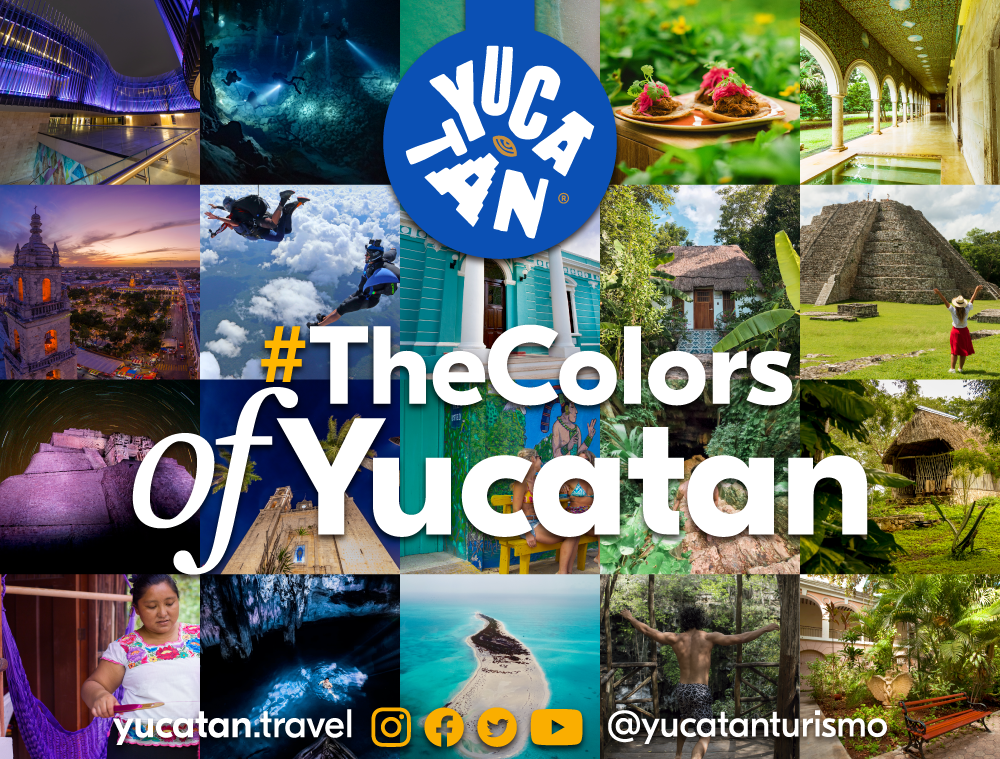


No Responses to “An Adventurous Portugal Itinerary: From Porto to Lisbon on Two Wheels”